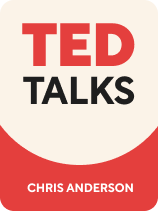

This article is an excerpt from the Shortform book guide to "TED Talks" by Chris Anderson. Shortform has the world's best summaries and analyses of books you should be reading.
Like this article? Sign up for a free trial here .
Do you want your speech to leave a lasting impression? What can you do to “wow” your audience?
If you want to give your speech an extra oomph, think creatively and don’t shy away from unconventional methods. By doing something out of the box, you’ll ensure your speech stands out and leaves a memorable trace in your audience’s minds.
Here are the five unconventional public speaking techniques to elevate your speech.
“Wow” Your Audience
If you want your speech to stand out, incorporate “out of the box” public speaking techniques to elevate it and leave a memorable impression. However, if not done correctly, these strategies can come across as gimmicky.
1) Use props: Dramatic or unexpected props can ignite an audience’s curiosity and deepen their understanding. If you use a prop, Anderson says to make sure it’s serving one of those two purposes—if it isn’t, then it’s a distraction.
(Shortform note: Consider the size of your audience when deciding whether to use a prop. If you’re speaking in front of a large group, will you be displayed on a large screen? If not, a prop might not be visible beyond the first few rows. If you’re speaking to a small group, a prop can be displayed or passed around.)
2) Stimulate the senses: During most speeches, the audience sees and hears you. Multisense stimulation is the act of involving the audience’s other senses—smell, taste, or touch. For certain subjects, this can work well. For example, if you’re discussing cooking, a taste for the audience will elevate the experience.
(Shortform note: Some people use scented oil diffusers to set a mood in the room. Scents like peppermint, citrus, and eucalyptus are said to awaken your audience, while lavender and sandalwood induce relaxation.)
3) Interview the subject: This format is half speech, half interview. The speaker is interviewed by another person, which gives the talk a more “in the moment,” conversational feel. The speaker has an idea of the topics ahead of time, however, and relevant images are queued up throughout to keep the talk visually interesting and on track.
(Shortform note: Oprah Winfrey is known for delivering powerful messages through the use of interviews. Her interviews are compelling to the audience because of the way she connects with her guests. She uses physical touch, eye contact, active listening, empathy, and energy matching—all of which enable her guests to vulnerably share stories and meaningful life lessons.)
4) Hold a faux debate: If you are delivering a talk with another person or within a group, present the information in a debate format. Both sides of the issue are presented one at a time, and each side presents a short closing argument at the end. You can even have the audience vote on a winner. Because the presentation is a group effort and not a true debate, you can lead the audience to the conclusion you want.
(Shortform note: Debate and discussion formats are similar in that two presenters go back and forth arguing their position on a topic. There is one striking difference, however: In a debate, the participants’ goal is to win. In a discussion, the goal is to understand. Both of these can work well as a presentation style, as long as it’s clear which one you’re using.)
5) Feature a surprise guest: If your talk is about a specific person, usher that person onto the stage near the end as a surprise for the audience. Anderson makes it clear that the purpose shouldn’t be for them to simply say “hello” to the audience. Rather, it should be to perform in a way that amplifies the speech. For example, if your speech is about the process of writing a hit song, bringing an artist on stage to sing one of your #1 songs would be a valuable addition.
(Shortform note: If you choose to include a surprise guest, you risk pulling the focus away from you and your thesis. Once the guest comes out, the energy of the room will elevate and it will be difficult to regain your audience’s attention. Save your guest for the end of your speech after you’ve delivered all of the crucial information. Then have the last word in your speech by thanking the guest and the audience.)

———End of Preview———
Like what you just read? Read the rest of the world's best book summary and analysis of Chris Anderson's "TED Talks" at Shortform .
Here's what you'll find in our full TED Talks summary :
- A nuts-and-bolts guide to public speaking that takes you from the initial idea to your final bow
- TED curator Chris Anderson's public speaking advice on everything from scripting to wardrobe
- A comparison of Anderson's advice to that of other public speaking experts






